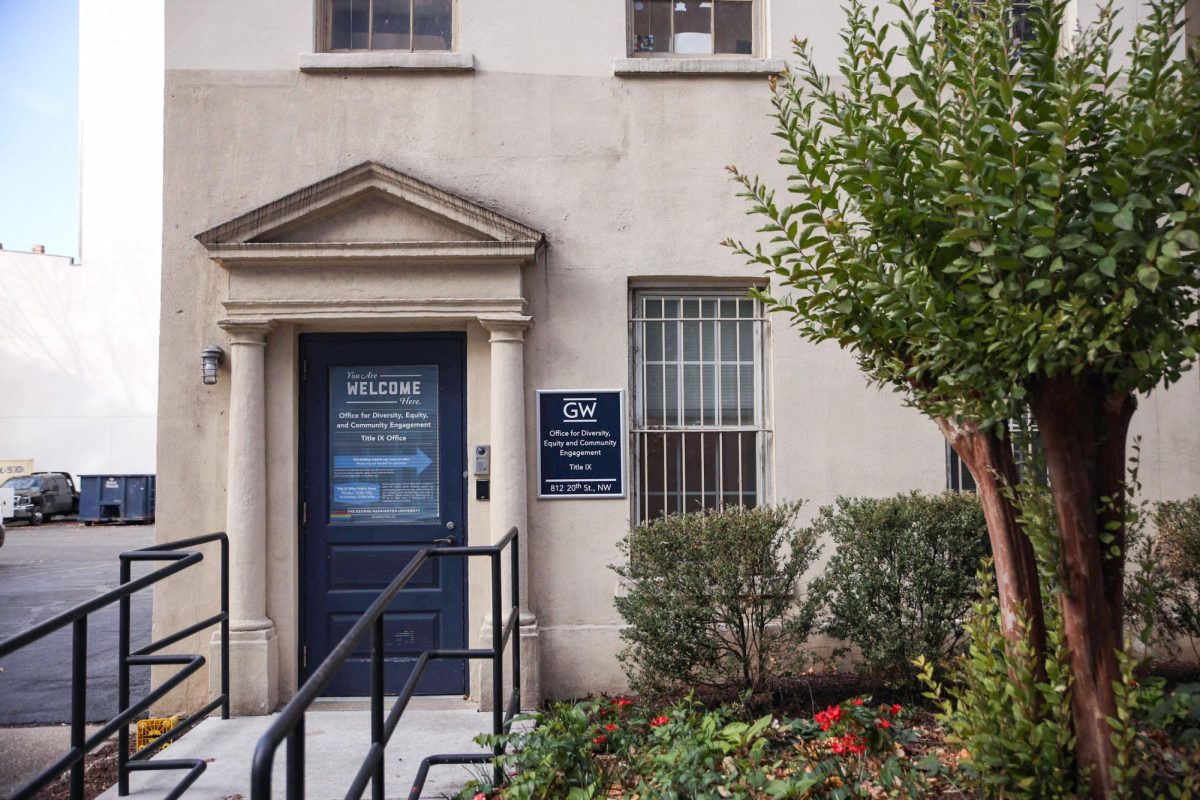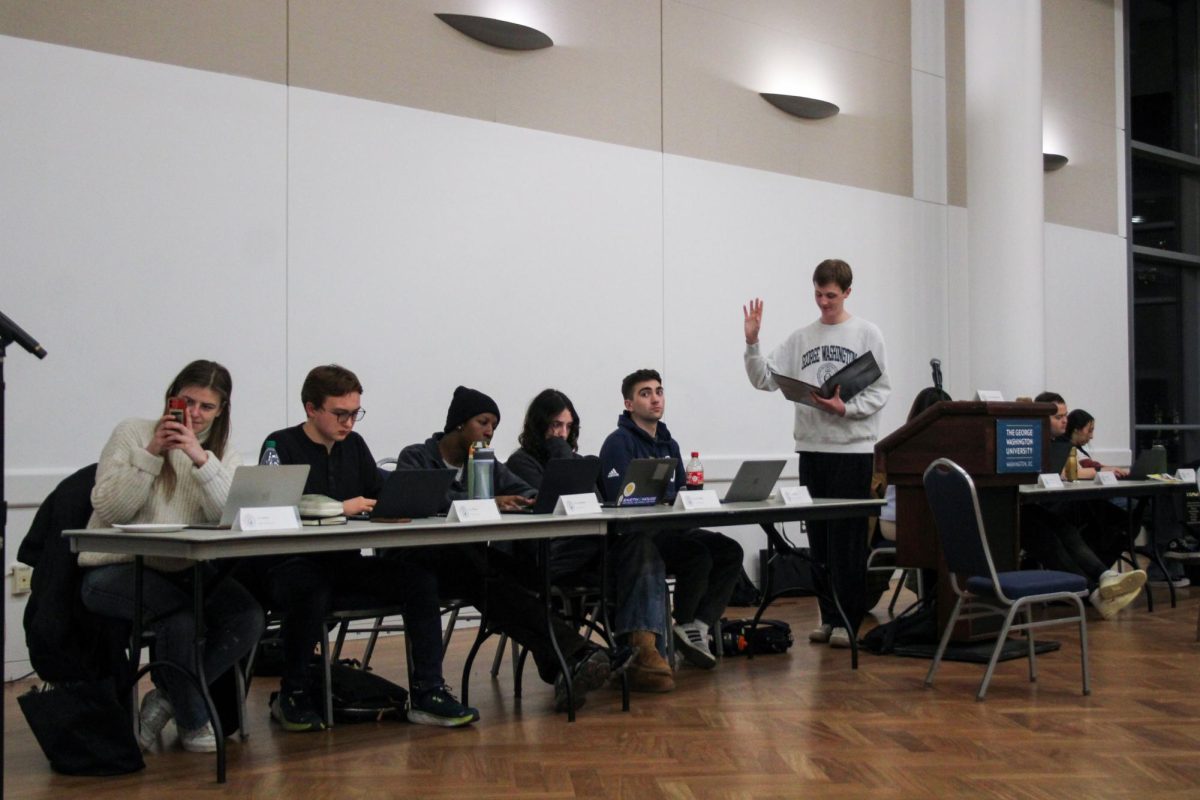Student Association leaders released the organization’s first analytical report Monday outlining campus areas in need of accessibility features.
The report outlined 68 areas on the Foggy Bottom and Mount Vernon campuses that do not comply with regulations in the Americans with Disabilities Act of 1990 and the Rehabilitation Act of 1973. The report includes short-term recommendations – like updating campus signage – and long-term recommendations, like hiring an ADA compliance officer or improving maintenance to ensure automatic doors work properly and are present in each building.
“If you’re glancing at it for the first time, not necessarily with a background in ADA-compliance rules, this report breaks down every single element that we found were problem areas,” Nicole Cennamo, the SA Senate’s chief of staff and co-author of the report said.
The nearly 60-page report states that 25 campus buildings lack an ADA-compliant ramp, 26 buildings have broken or no automatic doors and 63 spaces lack ADA signage, which would include Braille or the location of accessible bathrooms. There are 43 pathway obstructions – uneven ground or uncovered pits – and 35 elevators that are inaccessible, SA leaders found.
Cennamo said 20 student volunteers spent the past four months gathering data for the report, analyzing whether campus spaces had ramps, automated door openers, proper signage, clear pathways and elevators.
Cennamo said the SA has been working with administrators like Mark Diaz, the executive vice president and chief financial officer, David Dent, the associate vice president of facilities planning, construction, and management and Cissy Petty, the dean of students and vice president of student affairs, to execute the report’s recommendations.
“I think in order to really make the campus more accessible, we need to acknowledge where it’s not accessible, and then go from there and make intentional renovations to the spaces,” she said.
SA Executive Vice President Amy Martin said she coordinated with administrators and the Disabled Student Collective to audit the entire campus in a walkthrough to identify ADA-compliant spaces.
“That walkthrough gave us a framework that we were already working on as to what student sentiment believed to be the problems on campus,” Martin said.
Officials announced plans earlier this month to update physical and virtual maps to highlight on-campus accessibility features, like handicap spots and ADA-compliant building entrances.
Martin said some building signs state that accessible entrances are available, but the entrance is often located in areas like Tompkins Hall’s parking lot and dumpster area, which is dangerous for students with low-vision or low-hearing who would have to navigate cars and dump trucks.
“Some of our buildings have the accessible entrances down by where the trash is, which is a problem,” Martin said. “And then improper signage or poor signage, like in buildings such as Bell or Phillips and Rome Hall, the accessible bathrooms are on every other floor, and the signs don’t indicate that.”
Martin said the report includes legal research, like specific ADA guidelines from 1990 and 2010. She said SA senators may not have prioritized compiling an accessibility report in the past because the law is complex, making it difficult to set aside time to conduct in-depth research.
“For years, it’s not been something that they’ve pushed for, it’s not been a big piece of the conversation from student advocates,” Martin said. “That is kind of what sets this report apart, is that it’s on a new topic.”
Drew Amstutz, the SA’s vice president for public affairs, said he took more than one hundred photos of campus spaces, like non-functioning elevators in Madison Hall and non-ADA compliant bathrooms in Thurston Hall, to include in the report.
“I will be working with SA leadership to facilitate a way that we can advertise this report and that people will know about it, and get people talking about accessibility on our campus,” Amstutz said.
He said the information in the report will help highlight issues many students face every day, like navigating obstructed pathways and restrooms that are not ADA-compliant.
“Most of us who are privileged enough to be able-bodied, enjoy the campus without thinking of the challenges that others face and we walk through our lives without second looking,” Amstutz said. “This report brings to light the issues that many students on our campus deal with every day.”
Officials have invested $10 million in creating more inviting outdoor spaces for students and guests. Amstutz said officials should now focus on making those spaces physically accessible for every guest and student.
“We have many barriers to classrooms and residence halls that do not allow for every student to have the GW experience that everyone else gets to have,” he said. “This report will help to highlight those disparities, and really call on the administration to make some changes.”








